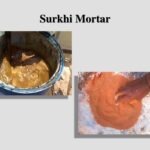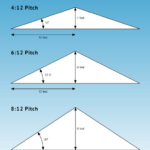A harsh mix of concrete lacks plasticity resulting in undesirable consistency and workability. In technical terms, a concrete mix with poor ratios of ingredients such that water, cement, and fine aggregates results in harsh mix.
Harshness in concrete is due to the excess of middle-sized aggregate as well as rough, angular, flat, or elongated aggregate particles.
Two important ratios in concrete mix are:
- Water cement ratio – w/c is the ratio of water to the mass of cement expressed in points with typical values 0.40 and 0.60. So, with a water to cement ratio of 0.45; the amount of water will be 0.45 times the weight of cement. Water not only helps in making a plastic paste of cement but is also responsible for hydration reaction. A good value of w/c helps in making concrete strength and durable.
w/c ratio = weight of water / weight of cement
so, weight of water = w/c ratio x weight of cement.
Also Read: Water Cement Ratio
Note: In most mix-designs the weight of cement is determined keeping in view the strength requirements of concrete. Lack of cement can also result in harshness of mix.

- Ratio of fine and coarse aggregate – As per ACI 544.3R-2008 [23]; the optimal value of fine to coarse aggregate ratio is 0.6. Aggregates comprises of 75% of the total concrete volume. So, a good concrete mix must balance the ratio to have optimal performance and good quality of concrete.
So, in case of deficiency of water and that of fine aggregate; the ingredients of the concrete will not mix together and may tend to separate. Similarly, properties of aggregates like angular and flakiness index is also an important parameter.
A harsh concrete mix will have rough, angular, or elongated aggregate particles resulting in harsh appearance and reduced plasticity.
Role of water in concrete
In all mix designs of concrete, water is a key ingredient that not just helps in forming a paste but it also helps in binding the aggregates together.
A decrease in w/c ratio may increase the strength of the concrete up to a certain limit in non-linear manner but as a result the workability and consistency is affected. So, in harsh mix of concrete, the w/c ratio is too low such that the mix is even unable to achieve the desired workability at the field.
So, the experts try to use optimal value of w/c ratio that not just helps get the best strength of the mix design but are also easy to work though in the field.
Also Read: Compaction factor test for workability of concrete
Here’re some important roles of water in concrete mix:
- Water helps in initiation of the hydration reaction of concrete/cement. It’s a chemical reaction between different bogue’s compounds:
- Tricalcium silicate (C3S) – Alite.Dicalcium Silicate (C2S) – Belite.Tricalcium aluminate (C3A) -Aluminate Phase.
- Tetracalcium Aluminoferrite (C4AF)- Ferrite Phase
Also Read: Can You Pour Concrete in rain? (Steps and precautions)
The hydration reaction of these cement chemicals result in significant increase in heat due to exothermic process in reaction. This chemical reaction between cement and water is known as hydration reaction.
- Water plays a key role in workability of concrete and homogeneity of the concrete mix. Workability is a broad term used to express the ability of fresh or raw concrete mix to be easily mixed, placed, compacted, and finished. Increasing the amount of water in concrete mix will increase workability up to a limit. After that, the water will result in segregation of concrete that is the process of settling of coarse aggregate particles. Surplus water is also bad for a concrete mix as it can cause bleeding, drying shrinkage, and cracking.
- It is also necessary to damp the surface of aggregate as fairly dry aggregates will take up extra water from the mix. Water also helps in spreading of the aggregate and reducing the friction in between the particles.
- Water also facilities in cementing material together to form a homogeneous mix that can be made in different shapes or designs.
Disadvantages of harshness in concrete
- A harsh concrete mix lacks plasticity and so it cannot be molded or hold a shape when poured in a formwork.
- Because of lack of cohesion and homogeneity, the ingredients of concrete tend to separate.
How to improve harshness in concrete?
You can improve the harshness in concrete mix by two methods:
Also Read: Air entraining agents – Definition – 5 Types
- Air entrainment – It is a technique involves intentional incorporation of tiny air-bubbles into the concrete during mixing to enhance the movability and workability of concrete. The tiny air bubbles are spherical in diameter with range of 0.0004 to 0.04 in. (0.01 and 1 mm). During mixing of concrete we add a small dose of surface active agent like a detergent that results in closely spaced air bubbles in the hardened concrete. Besides reducing harshness and improving workability, air entrainment also helps in increasing freeze-thaw durability of concrete.
- Increasing fine aggregate – High quality fine aggregates can result in high workability, good compressive strength, less workability, and less segregation. Fine aggregate help making concrete mix more compact along with making it more economical i.e. decreasing the consumption of cement. Fine aggregate play a key role in mechanical strength of the concrete mix.
- Increasing cements content – This is not always an ideal solution. Increasing cement content may increase the shrinkage, temperature during hydration, and chances of cracking. Anyhow, with increasing cement content you can increase the workability of concrete.
Also Read: Difference between Segregation and Bleeding in Concrete
You may sometime use one of the above methods but in most of the cases you need to improve the mix with all these methods.
A good concrete mix is plastic in nature. So, such a plastic mix results in cohesive nature that doesn’t segregate unless the concrete is handled improperly.


















